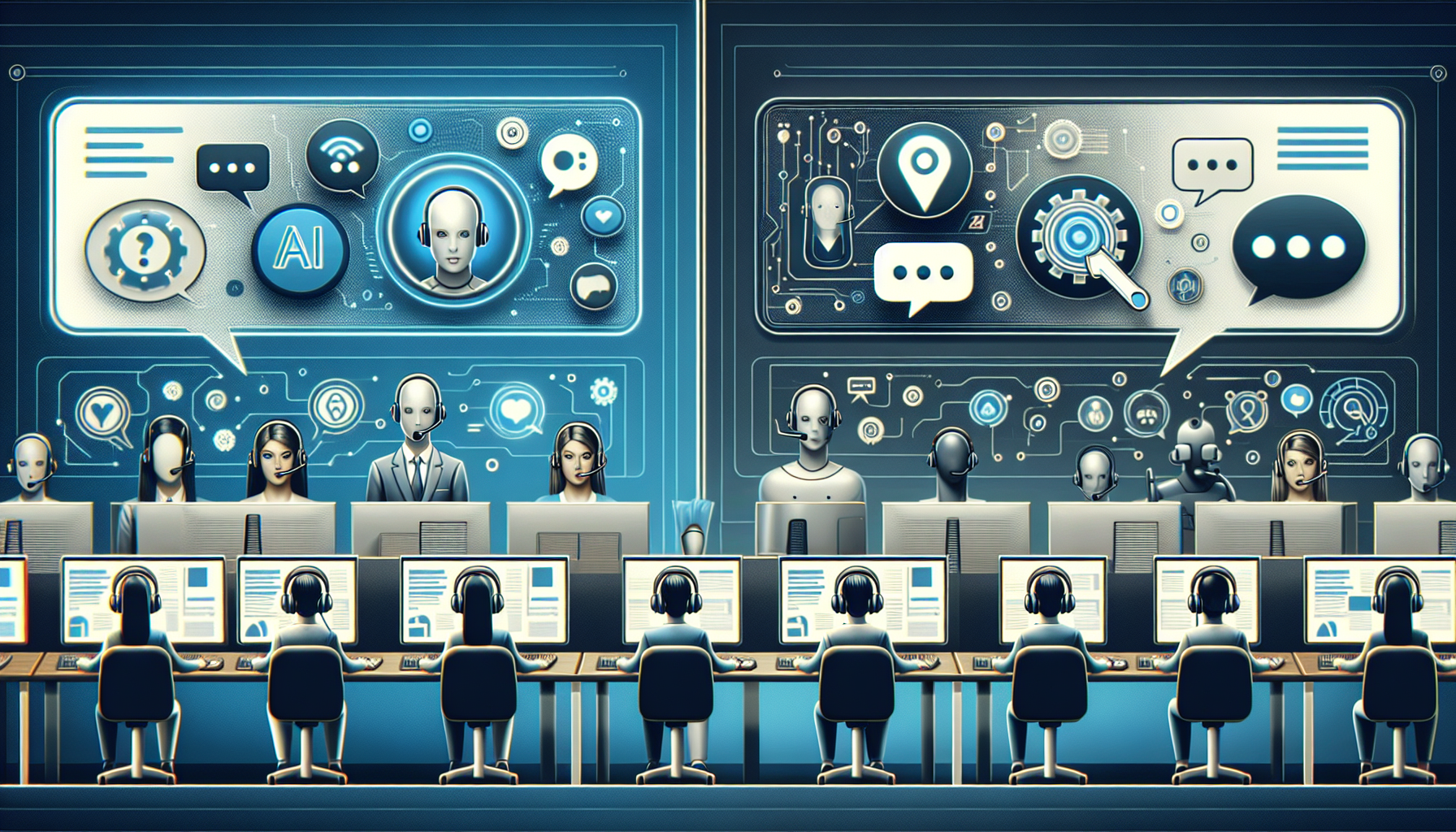Understanding Customer Service Tools
In the dynamic landscape of customer service, organizations are continually seeking innovative tools to enhance their support processes. This article delves into a comparative analysis of ChatGPT, an AI-driven conversational model, against traditional customer service methods. We will explore the benefits, challenges, and unique attributes of each approach, helping you make informed choices for your customer service strategy.
Traditional Customer Service Methods
1. Phone Support
Pros:
- Personal Touch: Human interaction fosters a personal connection, allowing representatives to empathize and build rapport with customers.
- Quick Resolution: Complex queries can often be resolved in real-time through detailed conversation.
Cons:
- Scalability Issues: Handling a large volume of calls can overwhelm staff, leading to increased wait times.
- Limited Availability: Traditional phone support typically operates within fixed hours, which can be inconvenient for customers in different time zones.
2. Email Support
Pros:
- Record Keeping: Email exchanges provide a paper trail that can be referred back to for accountability and learning purposes.
- Convenience: Customers can send inquiries at their convenience without waiting for a representative to be available.
Cons:
- Slower Response Times: Compared to other methods, email support can lead to delayed resolutions, which may frustrate customers.
- Information Overload: Long email threads can become confusing, and misunderstandings may arise.
3. Live Chat Agents
Pros:
- Immediate Interaction: Live chat offers real-time communication, allowing for rapid queries and responses.
- Multitasking: Agents can handle multiple chats simultaneously, maximizing efficiency.
Cons:
- Skill Dependency: The effectiveness of live chat services heavily relies on the training and experience of agents.
- Potential for Inconsistency: Varying agent performance can lead to inconsistent customer experiences.
ChatGPT: The AI-Powered Approach
ChatGPT embodies a sophisticated evolution in customer service technology, offering a range of benefits and some challenges compared to traditional methods.
1. 24/7 Availability
Pros:
- Continuous Support: ChatGPT is available around the clock, catering to global customers irrespective of time zones.
- Instant Responses: Customers receive immediate answers to their queries, significantly improving satisfaction rates.
Cons:
- Limited Emotional Understanding: While ChatGPT can recognize and respond to language patterns, it lacks genuine empathy and understanding that human interactions typically provide.
2. Cost Efficiency
Pros:
- Lower Operational Costs: Deploying an AI tool like ChatGPT can reduce the need for extensive personnel, thereby lowering labor costs associated with customer service roles.
- Scalability: ChatGPT can handle an unlimited number of queries simultaneously without diminishing performance.
Cons:
- Initial Implementation Costs: Integrating AI technology involves upfront investment in infrastructure and training for optimal usage.
Comparing Response Quality
Contextual Understanding
- Traditional Methods: Customers may receive varied responses based on a representative’s knowledge and experience, leading to potential discrepancies.
- ChatGPT: Utilizes vast data sources and learning algorithms that ensure consistent responses across varied inquiries, although it may occasionally misunderstand complex questions.
Complexity of Resolution
- Traditional Methods: Complex queries involving multiple steps may be better handled by trained human agents due to their situational awareness and nuanced understanding.
- ChatGPT: Although increasingly adept at handling complexity, ChatGPT might struggle with questions requiring deep contextual knowledge or sensitivity to individual customer emotions.
Emotional Engagement
Human Connection
- Traditional Methods: Humans excel at empathetic communication; a live agent can provide assurance, reassurance, and a feeling of being valued.
- ChatGPT: While capable of engaging in human-like dialogue, AI lacks true emotional intelligence, which can be a drawback when customers seek understanding in sensitive situations.
Integration Flexibility
Traditional Tools
- CRM Compatibility: Traditional customer service frameworks can be easily integrated into existing CRM systems, leveraging historical data for better customer insight.
- Cumbersome Updates: Updating these systems can be challenging and time-consuming, requiring manual input and potentially leading to human error.
ChatGPT Integration
- API Availability: Many organizations find ChatGPT’s API easy to integrate with existing digital frameworks, allowing for a seamless transition to AI-driven service.
- Continuous Learning: ChatGPT can learn and adapt from ongoing interactions, potentially improving over time without the need for extensive retraining or updates.
Security & Privacy
Risk Factors in Traditional Methods
- Data Vulnerability: With human agents, there is a greater risk of data leakage or mishandling of sensitive customer information.
- Inconsistent Protocol Adherence: Variability in agents’ adherence to privacy protocols can increase vulnerability to compliance issues.
ChatGPT Security Measures
- Data Anonymization: Advanced models like ChatGPT can implement data handling procedures that protect user privacy by minimizing personal data retention.
- Consistent Protocol Application: AI programming ensures uniform adherence to security protocols and compliance measures, reducing the risk of information breaches.
Training and Maintenance Requirements
Traditional Methods
- Training Investment: Human agents require ongoing training and coaching, which requires significant time and financial investment.
- Adaptation to Change: Rapid changes in products or policies necessitate frequent retraining to keep staff updated.
ChatGPT Management
- Lower Maintenance Needs: Once deployed, ChatGPT requires less consistent management, though periodic updates to its training data can enhance performance.
- Gradual Improvement: While initial setup can be resource-intensive, the AI can improve efficiency over time, with less human resource allocation.
Customer Preference
Survey Insights
- Immediate Needs: Many customers prefer rapid responses, which traditionally take longer through phone or email support.
- Generation Trends: Younger customers often favor digital interfaces, making AI solutions more appealing to this demographic.
Conclusion of Analysis
In evaluating ChatGPT against traditional customer service methods, businesses must consider the specific needs of their clientele, the nature of their products or services, and their available resources. While ChatGPT offers remarkable benefits regarding scalability, cost, and availability, traditional methods still provide irreplaceable human empathy and understanding that are critical for customer satisfaction in complex situations. Ultimately, the best approach may involve a hybrid model, leveraging the strengths of both AI technology and human support staff to create an optimal customer experience.


